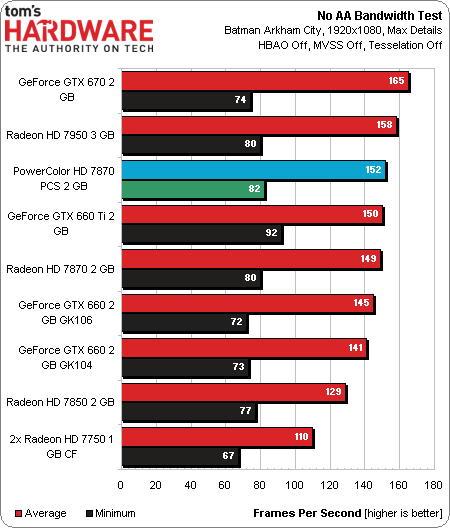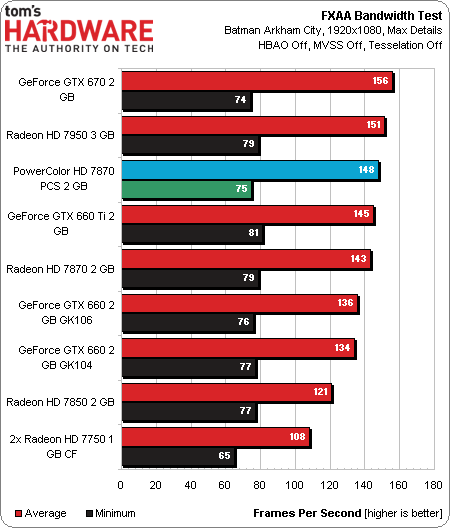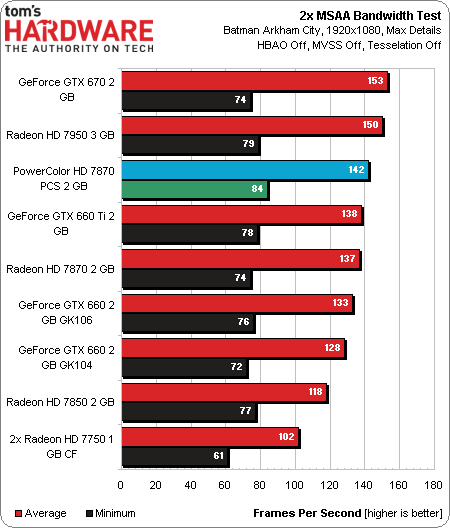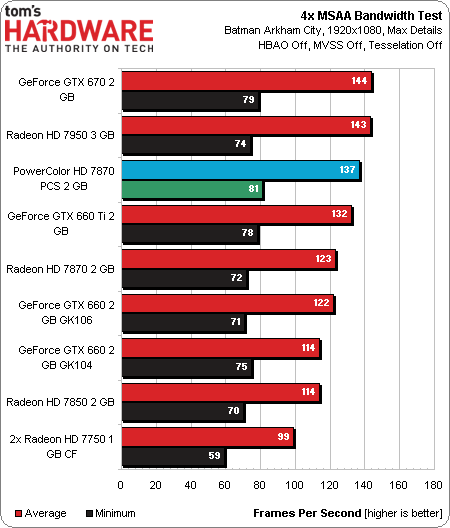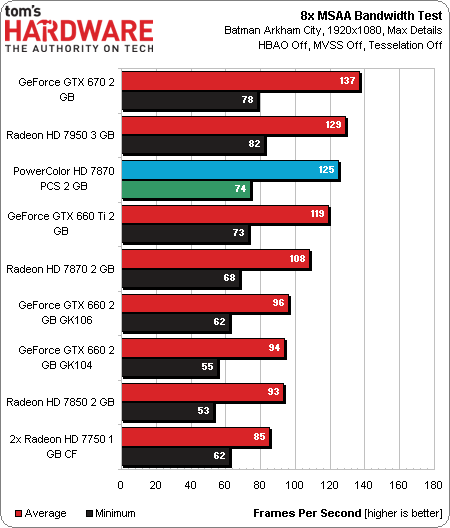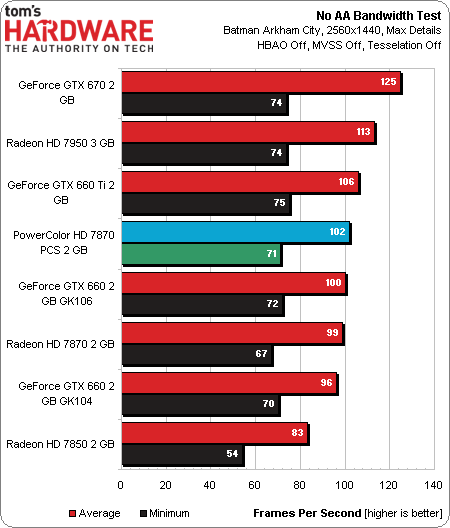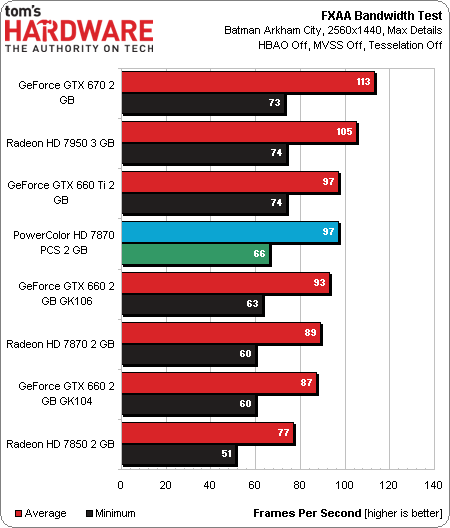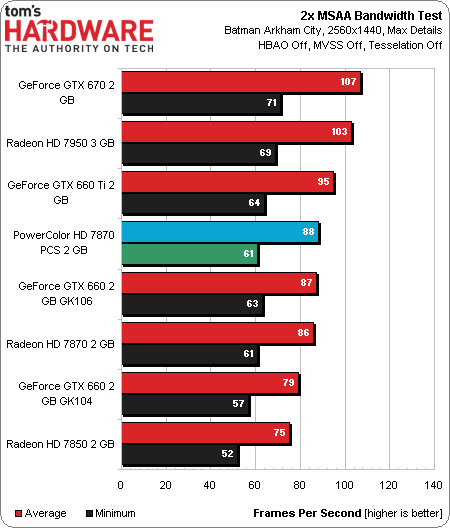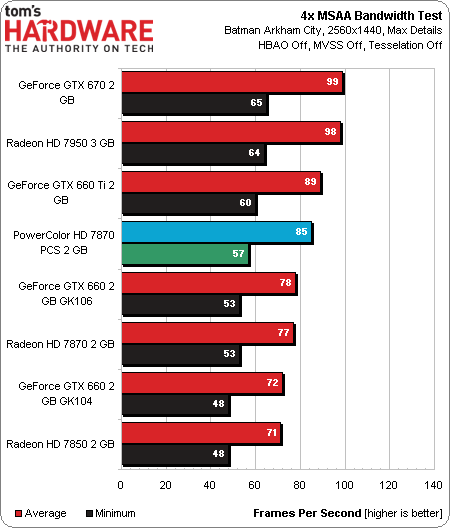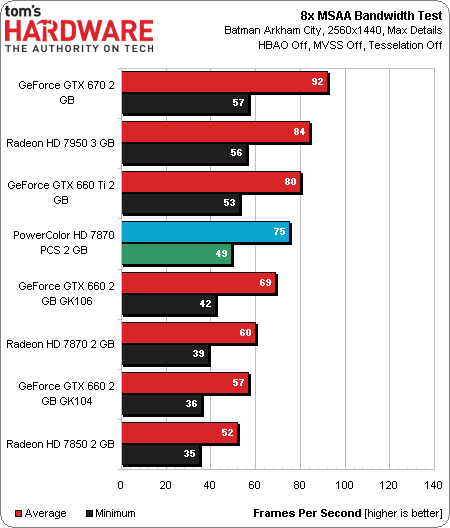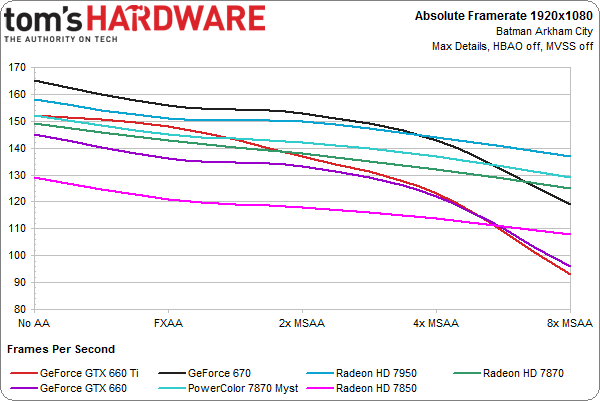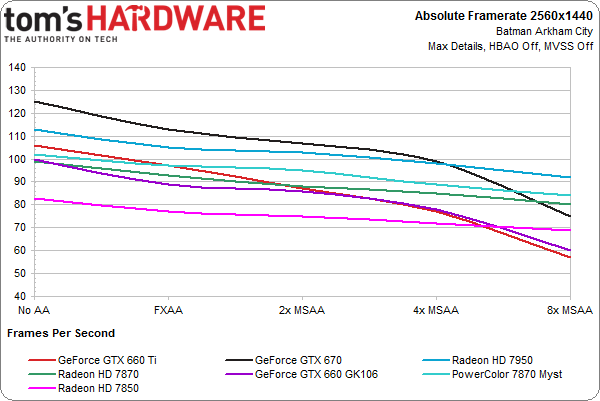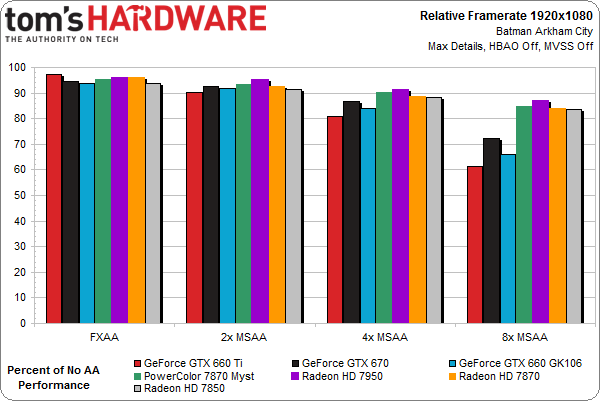Tahiti LE, Tested: PowerColor's HD7870 PCS+ Myst Edition
Today, we look at a card between two worlds. Despite a model number that suggests Pitcairn lineage, this board is based on AMD's Tahiti GPU. Does it behave more like its namesake, or the powerful engine actually under its hood? Read on for more!
Memory Bandwidth Analysis
Benchmarking with Increasing Anti-Aliasing Settings
We chose Batman: Arkham City as our reference for this test, just like we did in Seven GeForce GTX 660 Ti Cards: Exploring Memory Bandwidth. To avoid slowing the GPU down too much, we turned off tessellation, horizon-based ambient occlusion (HBAO), and multi-view soft shadows (MVSS).
The run with anti-aliasing turned off provides us with a good baseline of the cards’ performance for each of our two resolutions. And the performance is close to what it should be based on each board's technical specifications.
But what happens when the resolution is pushed up? Can the HD7870 PCS+ Myst Edition’s smaller 256-bit memory interface still handle high anti-aliasing settings?
All Benchmarks in a Flow Chart and in Percent
We put all the benchmark numbers into line graphs and percentage charts to provide a better overview.
It’s plain to see that the smaller memory interface doesn’t really impact performance. Higher clock rates appear to help compensate for any disadvantage that might show up on paper. In fact, there’s barely any performance difference between Pitcairn and Tahiti.
Get Tom's Hardware's best news and in-depth reviews, straight to your inbox.
Current page: Memory Bandwidth Analysis
Prev Page Test Setup And 2012 Chart Placement Next Page Boost, Overclocking, And CrossFire
Igor Wallossek wrote a wide variety of hardware articles for Tom's Hardware, with a strong focus on technical analysis and in-depth reviews. His contributions have spanned a broad spectrum of PC components, including GPUs, CPUs, workstations, and PC builds. His insightful articles provide readers with detailed knowledge to make informed decisions in the ever-evolving tech landscape
-
mayankleoboy1 Isnt this review quite a bit late ? IIRC, the card came ~1.5 months back...Reply
If it cant CFX with a 78xx, it has no right to be called a 7870+ . Marketing name fail +1.
The chip by itself is fine, though.
-
EzioAs That's quite a short review. It's not anything I haven't looked at other sites. Anyway, at the current price, I really have to agree the 7870XT (Tahiti LE) are excellent cards.Reply -
EzioAs Reply10449154 said:If it cant CFX with a 78xx, it has no right to be called a 7870+ . Marketing name fail +1.
I agree. AMD has already establish good model naming scheme (X900 for high-end gaming, X800 for mid-range, X700 for low end gaming) after the 6000 series. To be honest, I say it's stupid not to call this chip the HD7930. -
hero1 Azn CrackerOr maybe the 7950 LE since its pretty much the same card just slower.Reply
I agree with you on this one. Someone need to give these guys a call and tell them how it is. What a load of bs on their naming scheme. I would absolutely call this 7950 SS or LE! -
FormatC The frametime thing (in some games) was gone (more or less) with the latest drivers and I think that AMD will handle the memory now a little bit better ;)Reply -
shikamaru31789 If only some other manufacturers were making these, Power Color's cooling solution isn't that good, 37.8 decibels while Gaming is not quiet enough for me.Reply -
EzioAs Reply10449161 said:If only some other manufacturers were making these, Power Color's cooling solution isn't that good, 37.8 decibels while Gaming is not quiet enough for me.
Sapphire has one too, I believe -
shikamaru31789 EzioAsSapphire has one too, I believeYeah, I just now noticed it on Newegg. Not sure why I didn't notice it before, based on the reviews it's been on there awhile. Too bad it costs $20 more than Power Color's. Still a good deal even at $260, since this review indicates that it's almost as fast as the much more expensive 7950's.Reply
